How AI is Redefining Zero Trust: The Role of Nexus AI in Hypershield Deployments
Today, the Zero Trust model has evolved from a framework to a living, learning ecosystem — one increasingly powered by artificial intelligence. Traditional Zero Trust principles (“never trust, always verify”) remain foundational, but the scale and velocity of today’s hybrid cloud and AI-driven environments demand something more adaptive. .png?width=357&height=357&name=Cisco%20Partner%20Logo%20(1).png)
Enter Nexus AI, the intelligence layer behind Hypershield deployments, reshaping how organizations build, enforce, and evolve Zero Trust architectures in real time.
The Problem: Static Zero Trust Doesn’t Scale in 2025
Five years ago, Zero Trust strategies focused on microsegmentation, least privilege, and continuous authentication. While effective, these controls relied heavily on static policies and manual updates — a mismatch for 2025’s dynamic digital environments.
Today’s infrastructure is AI-native, hyper-distributed, and self-scaling. Workloads appear and vanish across multi-cloud platforms, edge devices, and AI inference nodes. The result? Traditional policy enforcement struggles to keep up, leading to:
- Policy drift — outdated trust rules that don’t reflect current workloads.
- Alert fatigue — endless low-value notifications requiring human review.
- Response latency — slow containment in environments moving at machine speed.
The Zero Trust principle still applies — but the execution must evolve. This is where Nexus AI comes in.
Nexus AI: The Brain of Adaptive Zero Trust
Nexus AI represents a new generation of security intelligence engines — self-learning systems that continuously analyze telemetry from across your environment and adjust trust decisions dynamically.
Think of it as the central nervous system of a modern Zero Trust network. While Hypershield acts as the muscle, enforcing microsegmentation and isolation at the fabric level, Nexus AI is the brain — sensing, interpreting, and directing precise actions based on real-time risk context.
Key Capabilities of Nexus AI:
- Context-Aware Verification Nexus AI constantly correlates identity, behavior, and network flow data. Instead of treating every connection as equal, it calculates a trust probability for each session and dynamically enforces the right level of access.
- Real-Time Risk Scoring It builds a continuously updating risk profile for every asset, user, and workload — factoring in threat intelligence, recent activity, and even business criticality.
- Autonomous Policy Adjustment When Nexus AI detects an anomaly — say, a workload accessing resources outside its usual pattern — it can instruct Hypershield to enforce stricter segmentation or temporarily isolate the workload for validation.
- Threat Prediction, Not Just Detection Leveraging federated learning models, Nexus AI anticipates potential compromise pathways before they’re exploited — essentially predicting lateral movement before it happens.
How Hypershield and Nexus AI Work Together
The synergy between Hypershield and Nexus AI creates a closed-loop, self-healing Zero Trust architecture. Here’s how the workflow unfolds:
- Observe: Hypershield continuously collects telemetry across applications, endpoints, and workloads.
- Analyze: Nexus AI ingests this data, applying behavioral baselines and threat models to detect deviation.
- Decide: Based on risk thresholds, Nexus AI determines whether to allow, limit, or block a connection.
- Enforce: Hypershield acts instantly, applying microsegmentation rules, network isolation, or adaptive access restrictions.
- Learn: The feedback from these actions feeds back into Nexus AI’s model, improving its precision over time.
This creates what Cisco refers to as an AI-driven security fabric — a responsive, distributed protection layer that acts faster than human analysts ever could.
Why This Redefines Zero Trust
- From Static Rules to Living Policies
Zero Trust used to rely on pre-defined configurations. Now, Nexus AI ensures those configurations evolve dynamically based on what’s happening in your environment right now. - From Reactive to Predictive Security
Instead of waiting for alerts, the system predicts malicious behavior before it escalates, allowing Hypershield to contain threats automatically — often within seconds. - From “Never Trust” to “Continuously Verify”
Nexus AI takes continuous verification to its logical endpoint — every packet, every identity, every workload is re-evaluated with real-time intelligence. - From Complexity to Clarity
AI simplifies operational complexity by handling adaptive enforcement behind the scenes. Security teams get visibility into why actions were taken — but don’t have to manually write thousands of policies to get there.
Real-World Impact (2025 Use Cases)
- Cloud Microsegmentation at Scale: Nexus AI maps workload communication patterns across multi-cloud deployments and uses Hypershield to automatically segment by behavior, not just IP or tag.
- Ransomware Containment in Seconds: When lateral movement or encryption activity is detected, Nexus AI triggers Hypershield to isolate affected endpoints before the attack spreads.
- Adaptive Access in Remote Work Environments: Remote users’ trust levels shift dynamically — if a user’s device posture weakens or geolocation changes suddenly, access restrictions update instantly.
- AI Model Security: As more companies host LLMs and inference endpoints, Nexus AI monitors data access and model queries to prevent leakage or prompt injection, using Hypershield to restrict anomalous data flows.
Measuring the Impact
Organizations deploying Hypershield + Nexus AI have reported:
- Up to 80% reduction in containment time
- 60% fewer manual security interventions
- 50% faster Zero Trust policy rollouts across distributed environments
- And critically — zero major incidents where Nexus AI-led containment engaged within seconds
Looking Ahead: The AI-Native Zero Trust Era
Zero Trust isn’t going away — it’s growing up. The combination of Nexus AI’s intelligence and Hypershield’s enforcement power marks the shift from static architecture to an AI-native defense fabric.
By embedding AI directly into the enforcement layer, Zero Trust in 2025 is no longer just a framework — it’s a self-optimizing, always-on guardian that adapts as fast as your business (and your threats) do.
AI isn’t replacing Zero Trust — it’s redefining it. And with Nexus AI guiding Hypershield deployments, the future of cybersecurity looks less like a checklist and more like a living, learning ecosystem.




